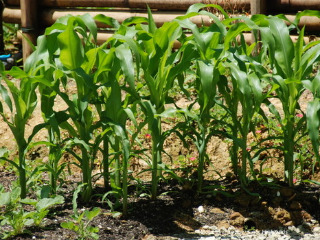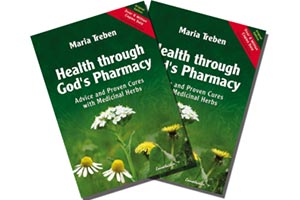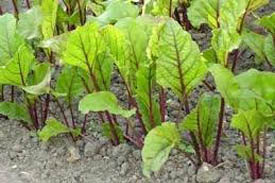Planning and Planting: Corn
 Corn for centuries has been used as a medicinal and food source. Although a high nitrogen consumer, water, and space waster (when planted in rows), it is on every gardener list-including mine. I am solely interested in growing a small open-pollinated sweet corn to fit in block planting inside my newly designed Grow-Haus-a boxed underground watered raised bed with a hoop type cover and deer screen.
Corn for centuries has been used as a medicinal and food source. Although a high nitrogen consumer, water, and space waster (when planted in rows), it is on every gardener list-including mine. I am solely interested in growing a small open-pollinated sweet corn to fit in block planting inside my newly designed Grow-Haus-a boxed underground watered raised bed with a hoop type cover and deer screen.
The best sweet corn for tiny garden plots that I have found is “Golden Midget”, currently sold this year through www.VermontBean.com, item #3916. In addition in another plot, if I get my Deer Fencing up, I plan on growing Indian Corn –Zea Mays- the real ancient variety which has medicinal properties heralded for centuries as a diuretic for weight reduction, edema, stones, gout, rheumatism, and bedwetting. The corn “silks” are the necessary part; cut off before the pollen drops to the silks. Then it is quickly dried in the shade and used as a tea. Two varieties are available through www.horizonherbs.com, The Peruvian Purple makes excellent cornbread – the real stuff men are filled with. Cornbread and beans makes a complete protein.
I have to feed my rabbits and chickens-corn being one of the best supplemental food sources for them and considering the amount necessary I will be laboring on a old time corn crib and shucking room next year. In the old days that I can still remember – before video games and TV- youngsters were in the barn husking corn. If a red ear was found that person could kiss the beau of his, or her choice, while all the kids giggled.
Although field corn is common, mostly hybridized, it is still the number one feed sold for feeding livestock and chickens; indirectly you are what you eat: field corn. It is passed along the food chain to you. For the small plot homesteader like my self it is cheaper in labor and hauling to buy my feeds ready milled, but being picky I would like to grow the less fertilizer dependent: “Golden Bantam”. This is another old variety that is sweet and open pollinated, which implies that you can save the seed. This is important as seed prices are increasing, and some seeds are becoming scarce.
When the top male part of the corn plant sprouts, the silks burst forth below from the forming ear – each silk links to a single corn seed. These plants are wind pollinated and a little extra shake on the plant ensures pollination. Note carefully when inspecting your corn plants at the ear where the silks disappear you may see a small hole or “frass”. This is a corn borer, and will make the end of the ears a mess, sometimes boring along the entire ear. To eliminate this problem a safe alternative is Bacillus Thuricide (BT) a dust. I use a Dustin-Mizer™ for dispersing the BT right on the emerging silks. Ergo: No caterpillars. Do wear a dust mask though. A liquid form is available under the trade name: Thuricide™.
This item may be had in most garden centers, or at a good price contact: www.vermontbean.com, item# 53092. While you are flipping pages looking for large plot corn and seed row planting, you might consider #53020: Earthway Precision Garden Seeder™. I have used this product and find it very accurate and time saving, also eliminating the backbreaking seed by seed, by seed, spacing inheritant in large plots and acreage. Also note www.eNasco.com/farmandranch, item C06531, hand corn sheller.
Corn has but one principal big rule: Do not plant cross varieties near one another – that means at least 200 yards separation. Popcorn pollen is the worst for getting into sweet corn that will ruin your big 4th of July Plans. Of course to have corn by then implies you must plant early, most corns requiring two and sometimes two and a half months to mature. Consider, at the time of this writing, a cold Spring with damp seed rotting properties is upon us. Two years back we could have planted in February-now it looks like June for planting corn, unless you are planting in a greenhouse. Most experienced gardeners plant in two-week intervals with the hope that the corn will not all ripen at the same time.
Corn requires a 70 F. soil temperature for several days and an outlook for more hot weather. The ground requires a nice 8-8-8 or 10-10-10 fertilizers, some farmers with 9-foot tall field corn utilizing 20-10-10 fertilizers. A 6.5 pH is fine. Territorial makes a nice organic, corn fertilizer, www.territorialseed.com item # ZFE250, for home organic minded gardeners. Homemade compost is great, spread evenly between the rows but not tilled in. The feeder roots will find it quickly.
Utilizing the row method you first dig a 6-inch deep furrow, lay in a dribble of fertilizer of your choice, then rake in some soil cover, then plant seed every foot. Cover again and hope it rains when the corn starts to tassel – that is when the ears swell out. Make sure you have at least 4 rows along side one another for pollination. Some people with wind problems mound soil up against the emerging plants. The use of a small push type seed planter works well in soft tilled soil.
For those with limited space, as in the White House Garden concept, growing in blocks is quite feasible. I fertilize the entire block, tilling the fertilizer in, then using a “dibble” I punch 4 to 6 inch holes in the classic checkerboard pattern, then drop the kernel seed in the hole, but leave the hole open. This ensures the seed gets warmth of the soil, moisture, and not crowded out. Your shoots will come up faster and when it rains all the corn plants will be set deeper, as the soil fills in. Of course this is a hands and knees project, but suitable for small plots, and small Golden Midget corn. I can squeeze these with the corners to ten inches, twelve with Golden Bantam.
When the corn tassels, hope for rain, or hose water. You will see the difference. After the corn is up a foot, you can mulch too.
When the silks start to turn brown- harvest the ears. Get the corn to the pot in 2 to 4 hours or you will lose the sweetness. That is why the store corn is flat tasting.
There are so many varieties of corn for you to select it is best you just skim the catalogs and garden centers. Some corn seed is treated with “Captan” an anti-fungal, anti-rot coating that does not meet organic purity. It does help, especially with large field planting, and I suppose that is what we have been consuming for decades from the farms, directly or indirectly. If you use treated seed be sure to use gloves or at least wash your hands thoroughly after handling.
To dry the corn for next year, shuck the corn and just let it dry and get flint hard in a window (or build a corn crib). The old picturesque flintlock rifle and ears of Indian corn over the hearth was real – you had heat through the miserable winters, and kept some kernels from molding.
Lastly, a machete type knife, if you are careful, cuts up the stalks for the compost pile, or feed to your goats and rabbits. Once the stalks left over are dried out – add to the ever growing compost pile, or chop in six inch pieces and till under the soil. Although the ground is rough with protruding stalks hither and yon, you can still start planting your fall Brassia-cabbage, etc. which we will be writing about shortly as we start fall planting in late June in the seed pots, then set out in September.
Copyright: 2008, Back2theLand, Mark Steel.



